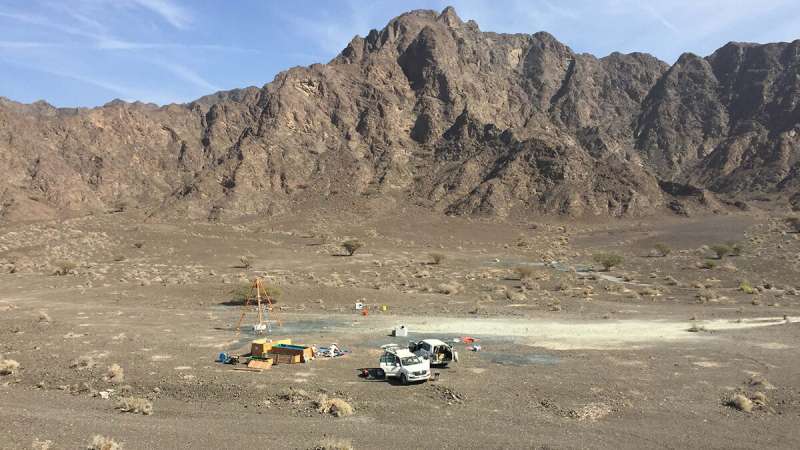Shedding light on microbial communities in deep aquifers

Underground in peridotite aquifers, the rock can interact with water to produce hydrogen, which microbes can use to power their cells, research suggests. Yet much of the research on these water-rock interactions has been conducted using water samples collected from open wells or seeps that may have been contaminated by exposure to the atmosphere.
To better understand these water-rock interactions' impacts on microbial community compositions, Nothaft et al. studied the hydrogeochemistry of these interactions in peridotite aquifers at specific depths using a packer system, which includes inflatable rubber bladders, or packers, that can be used to gather water samples from targeted areas unreachable from surface waters. The team collected samples from two 400-meter-deep wells in the Samail Ophiolite in Oman, measuring dissolved gases and microbial community compositions using 16S rRNA gene sequencing.
The analyses revealed an ecosystem teeming with chemolithoheterotrophic bacteria in the class Thermodesulfovibrionia, which yield energy by combining hydrogen oxidation with sulfate reduction and build their cells using organic carbon from the environment. More work is needed to find evidence for microbe-induced sulfurization within these boreholes in Oman, the authors note, but the study provides a new application of a methodology for understanding how hydrologic and biogeochemical processes influence microbial communities in deep aquifers on Earth and perhaps beyond our own planet.
More information: Daniel B. Nothaft et al, Aqueous Geochemical and Microbial Variation Across Discrete Depth Intervals in a Peridotite Aquifer Assessed Using a Packer System in the Samail Ophiolite, Oman, Journal of Geophysical Research: Biogeosciences (2021).
Provided by Eos
This story is republished courtesy of Eos, hosted by the American Geophysical Union. Read the original story .




















